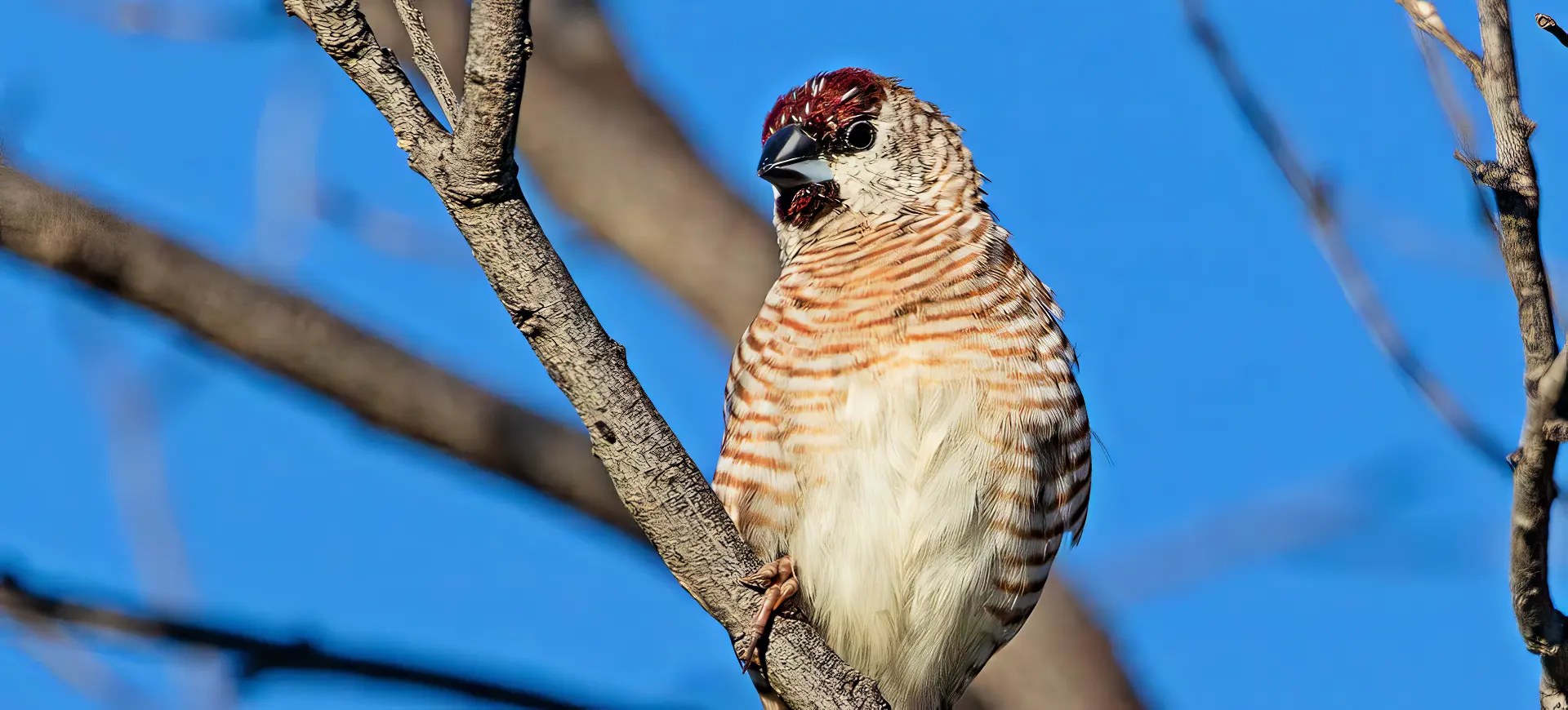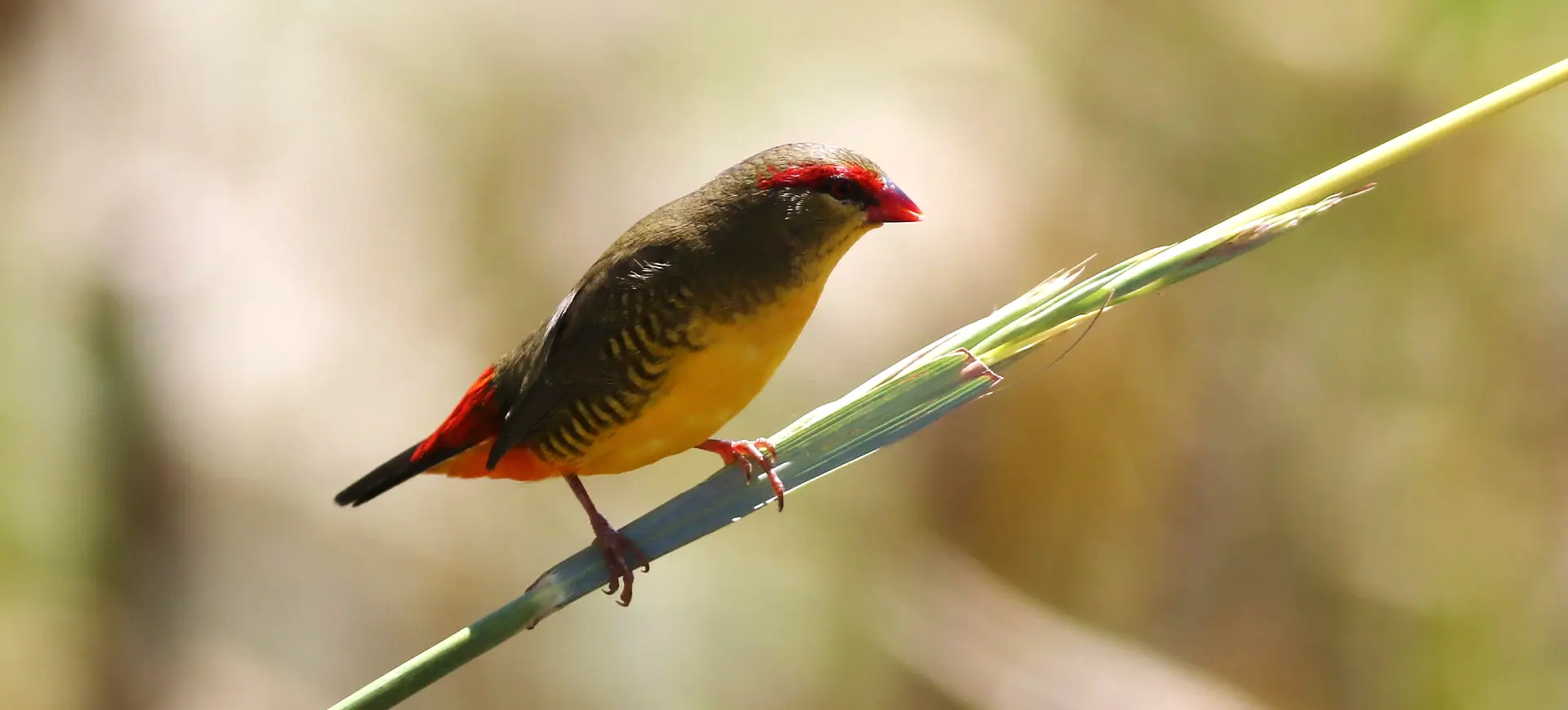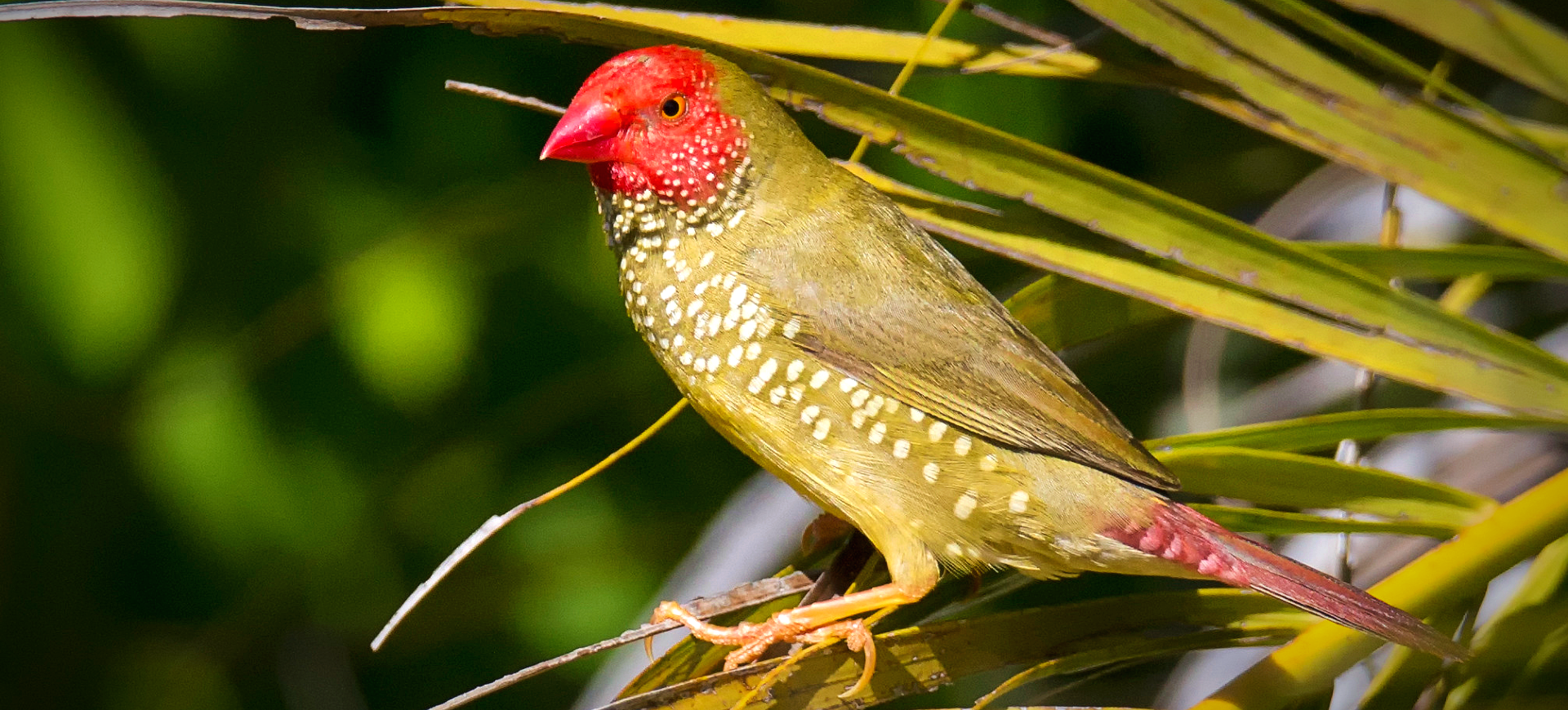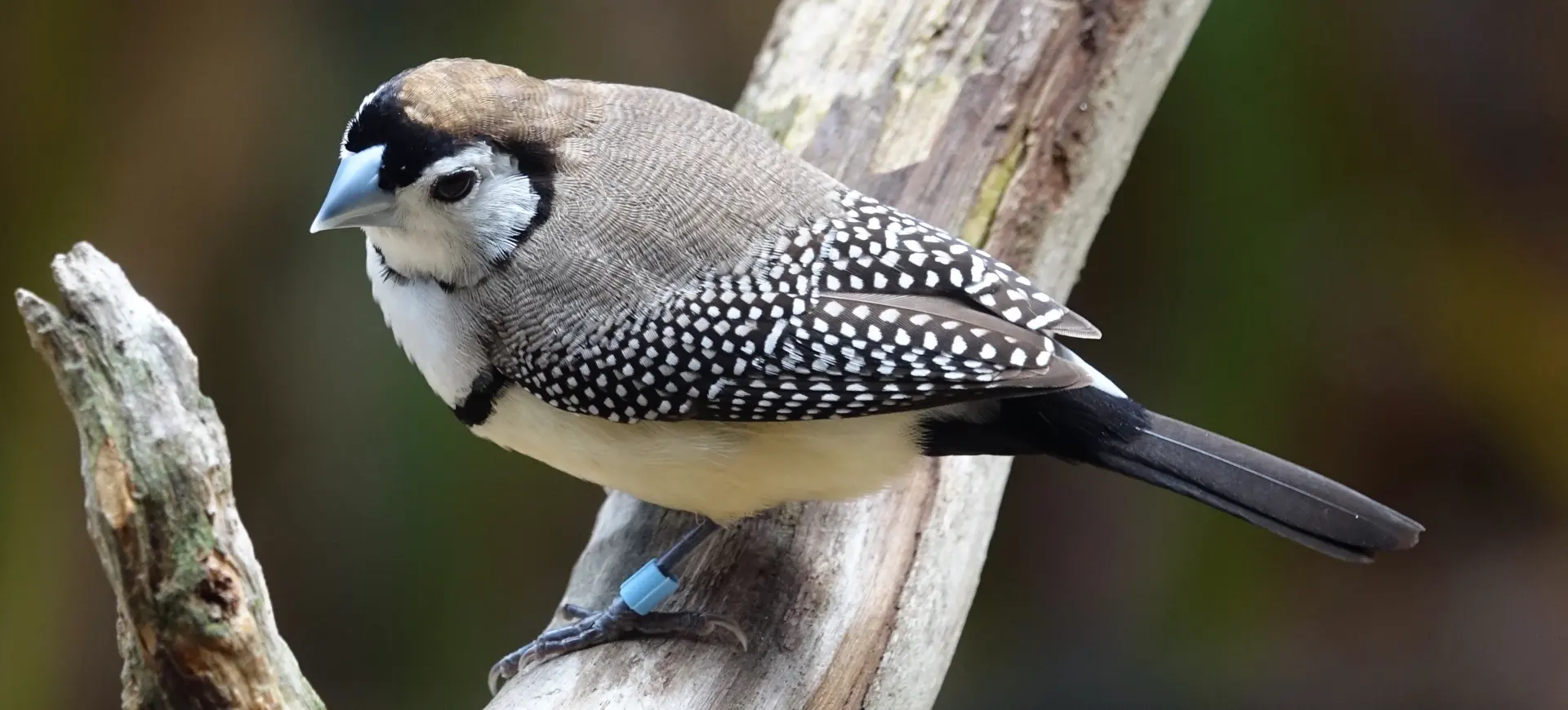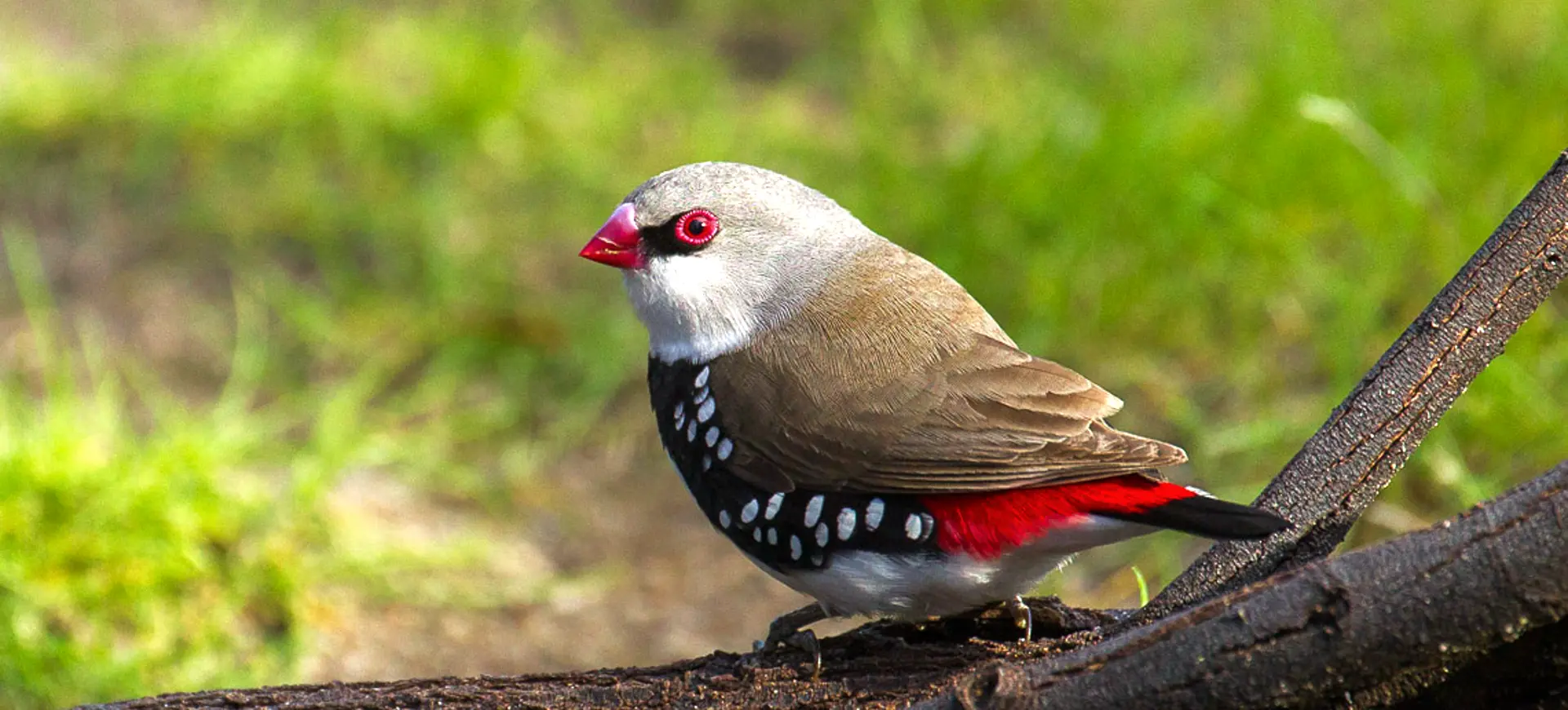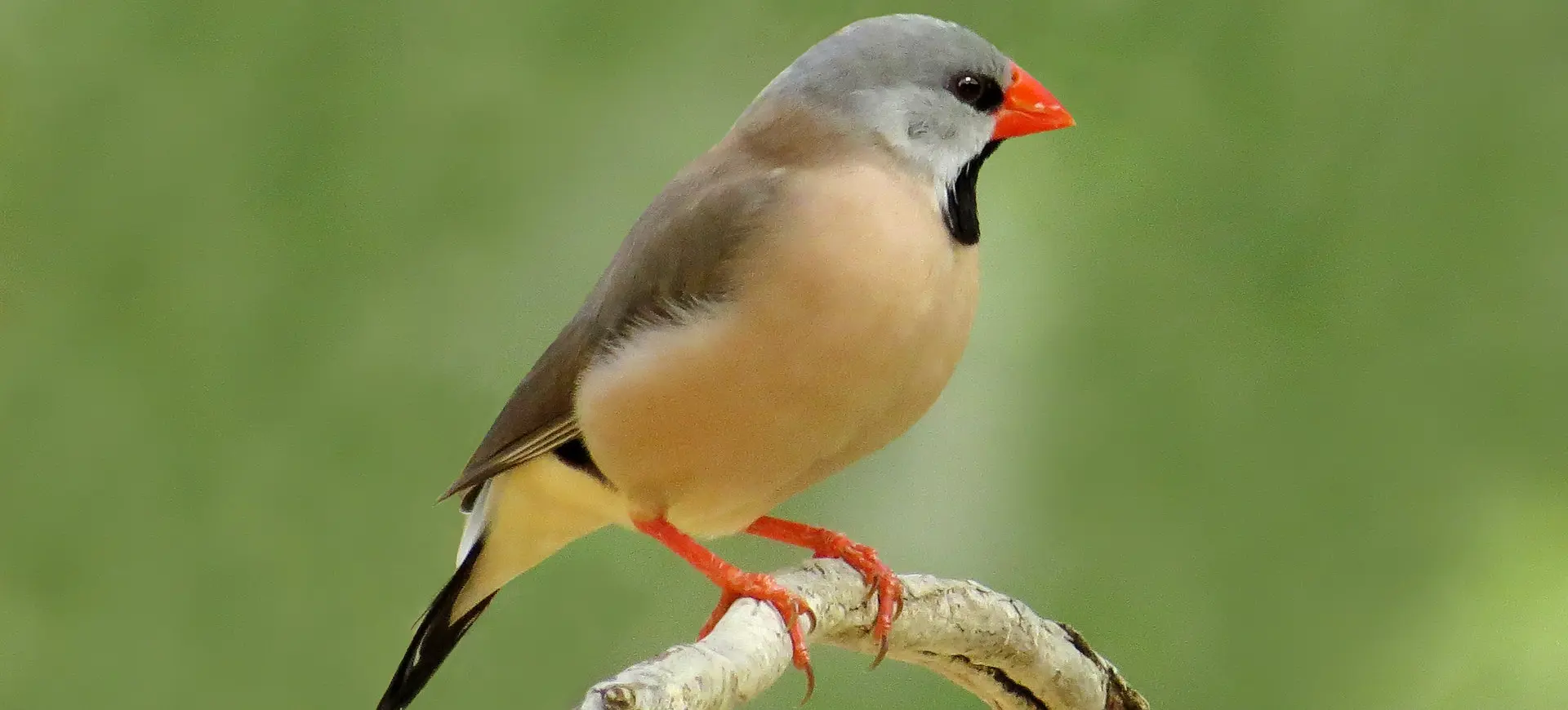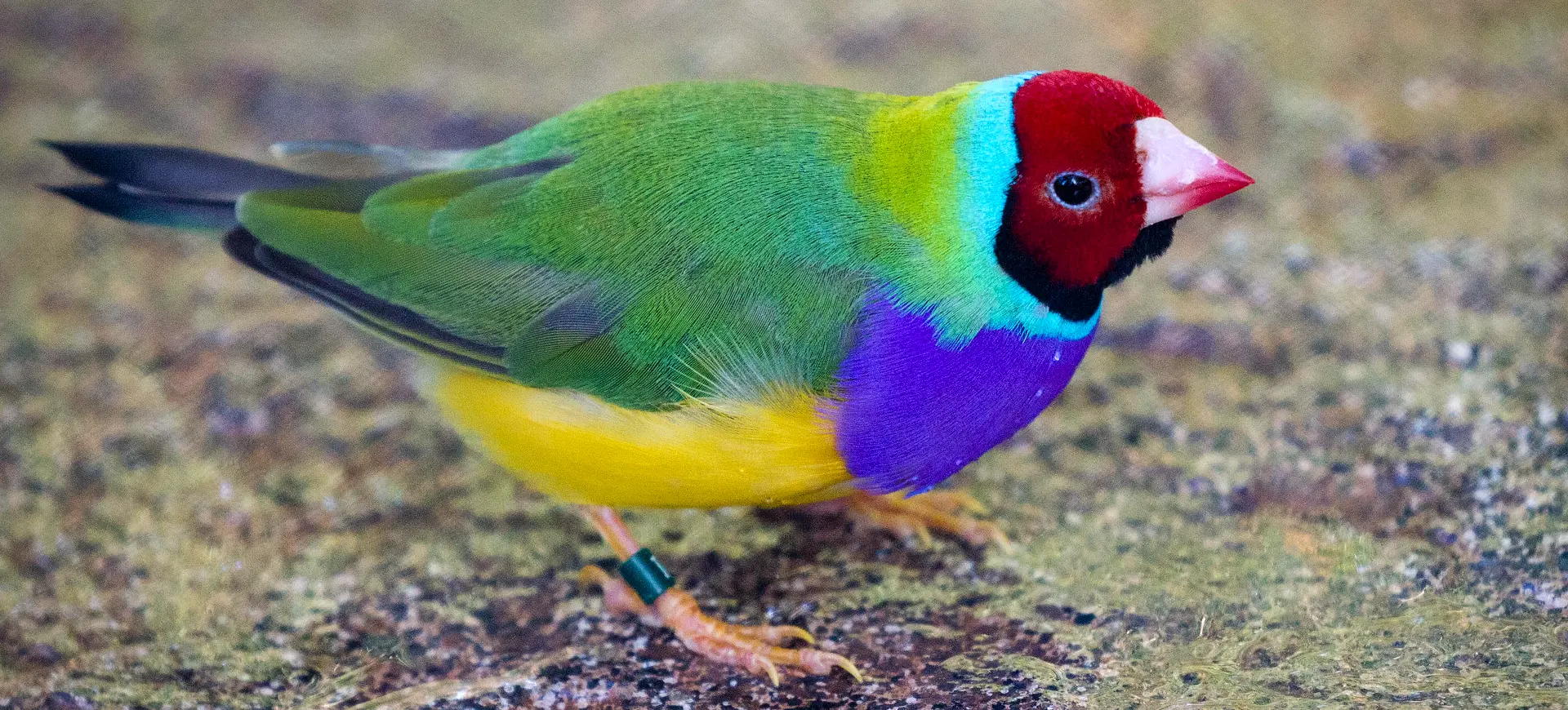Overview
The African Silverbill, Euodice cantans, is a diminutive yet resilient bird species across sub-Saharan Africa. With its understated grey-brown plumage and distinctive silver-colored bill, the African Silverbill is adaptable, thriving in various environments, from dry savannas to cultivated lands. This bird’s compact body, measuring 11 to 12 cm in length, and its robust, conical beak are perfectly adapted for a diet predominantly of seeds. The subtle scalloped pattern on its feathers provides excellent camouflage against the dry grasses of its natural habitat, allowing it to blend seamlessly into the surroundings.
Inhabiting arid and semi-arid regions, African Silverbills have developed remarkable survival strategies. They are highly sociable, often found in flocks that include individuals from other seed-eating species, facilitating a communal approach to locating food and water sources. Despite their preference for dry environments, these birds exhibit an uncanny ability to find water, demonstrating their exceptional adaptability to harsh conditions. Their social structure and feeding habits highlight their important role in the ecosystem, contributing to seed dispersal and promoting plant diversity.
The African Silverbill’s presence across a wide geographical range is a testament to its versatility and resilience. These birds are adapted to survive in challenging environments and can coexist with human-altered landscapes. Their quiet, twittering calls add a delicate soundtrack to their habitats, enriching their environments’ biodiversity and acoustic richness. As a species, the African Silverbill exemplifies the balance between simplicity and complexity, proving that even the most unassuming creatures play vital roles in their ecosystems.
Taxonomy
Kingdom
Phylum
Class
Order
Family
Genus
Species
Type
Current distribution:
African Silverbills are widely distributed across sub-Saharan Africa, extending from Senegal and Somalia in the west to Ethiopia and Tanzania in the east. Their adaptability to various environmental conditions has facilitated a broad distribution, enabling them to occupy various habitats with varying degrees of aridity and vegetation. This extensive distribution reflects their resilience and ability to navigate the challenges of different landscapes.
Despite habitat change and human encroachment pressures, African Silverbills have maintained stable populations in many parts of their range. Their success is partly due to their dietary flexibility and social behavior, which enhance their ability to adapt to changing conditions. Conservation efforts to preserve their natural habitats are essential for ensuring African Silverbill populations' continued survival and health.
Physical Description:
African Silverbills are characterized by their grey-brown plumage, which effectively camouflages them in their natural habitats of dry grasslands and scrublands. The most distinctive feature of this species is its silver bill, a unique trait that stands out against the bird’s otherwise muted color palette. Both sexes exhibit similar plumage, making it challenging to differentiate between males and females based on appearance alone. The fine, scalloped pattern on their feathers, especially visible on the upper parts and flanks, adds a subtle texture to their overall look.
These birds possess compact and well-proportioned bodies, complemented by strong legs and feet well-suited for perching grass stems and navigating their environment. Their conical beak is a striking visual feature and a functional adaptation for their seed-based diet. Despite their small size, African Silverbills are hardy and agile, capable of quick movements and efficient foraging, underscoring their adaptability to various habitats and conditions.

Lifespan: Wild: ~5 Years || Captivity: ~10 Years

Weight: Male & Female: 0.3–0.4 oz (8–12 g)

Length: Male & Female: 4 in (10 cm)

Height: Male & Female: 4 in (10 cm)

Wingspan: Male & Female: 5–5.5 in (13–14 cm)

Top Speed: 25 mph (40 km/h)
Characteristic:
Native Habitat:
African Silverbills are native to a wide range of habitats across sub-Saharan Africa. They strongly prefer dry, open areas such as savannas, scrublands, and grasslands. Their adaptability also extends to human-modified landscapes, which can be found in agricultural fields, gardens, and other cultivated areas. This flexibility in habitat preference allows them to thrive in various environmental conditions, from arid regions to more moderately vegetated areas.
The ability of African Silverbills to locate water sources in their dry habitats is crucial for their survival. They have developed strategies to cope with water scarcity, including utilizing dew and moisture from vegetation. Their presence in diverse habitats underscores their role as a key species in their ecosystems, contributing to the balance and health of the environments they inhabit.
Biomes:
Biogeographical Realms:
Diet:
Diet & Feeding Habits:
The diet of the African Silverbill is predominantly seed-based, showcasing its adaptation to the dry habitats it frequents. It forages on the ground or in low vegetation, using its strong, conical beaks to extract seeds efficiently from grasses and other plants. This feeding strategy allows it to exploit various seed sources, ensuring a consistent food supply even in arid conditions. Its ability to digest various seeds contributes to its survival and success in diverse environments.
In addition to seeds, African Silverbills occasionally supplement their diet with small insects, especially during the breeding season when the nutritional demands increase. This varied diet helps support their overall health and reproductive success. Their feeding habits have a broader ecological impact, contributing to seed dispersal and regulating plant populations in their habitats. The social nature of their foraging behavior often leads to mixed-species flocks, which can enhance the efficiency of finding food resources and reduce predation risk.
Mating Behavior:
Mating Description:
African Silverbills are monogamous, with pairs forming strong bonds for multiple breeding seasons. During the breeding season, males engage in displays to attract females, including singing and fluffing up their feathers to appear larger. Nest building is a joint effort, with members constructing a dome-shaped nest from grasses and other plant materials. These nests are often located in dense vegetation or among thorny bushes, protecting them from predators.
The breeding season is influenced by the availability of food and water, demonstrating the species’ adaptability to their environment. Females lay between 4 and 6 eggs per clutch, which both parents incubate. The chicks are altricial, hatching blind and featherless, and require intensive care from both parents until they are ready to fledge. The cooperative nature of their breeding behavior highlights the strong social bonds between mates and the importance of parental investment in offspring survival.
Reproduction Season:
Birth Type:
Pregnancy Duration:
Female Name:
Male Name:
Baby Name:
Social Structure Description:
African Silverbills are highly social birds, typically observed in small flocks that may include individuals of other seed-eating species. This sociality facilitates sharing information about food and water sources, enhancing their survival in often harsh environments. Their flocking behavior also protects predators, as there is safety in numbers. Within these flocks, African Silverbills engage in various social interactions, from cooperative feeding to communal roosting, demonstrating the complex social dynamics within their communities.
The formation of monogamous pairs during the breeding season indicates a shift in their social structure, as pairs become more territorial and focused on raising their offspring. The strong pair bonds and cooperative breeding behavior of African Silverbills underscore the importance of social relationships in their life history. Understanding their social behavior is crucial for conservation efforts, as it can influence the management of habitats to ensure they support the natural behaviors and needs of the species.
Groups:
Conservation Status:
Population Trend:
Thanks to its adaptability and generalist nature, the African Silverbill population is considered stable across much of its range. They are commonly found in suitable habitats throughout sub-Saharan Africa, indicating healthy populations where environmental conditions support their lifestyle. Their ability to thrive in natural and human-altered landscapes has helped them maintain their numbers despite habitat change and degradation challenges.
Conservation efforts for African Silverbills focus on habitat preservation and protecting water sources essential for their survival in dry environments. Educating local communities about the importance of these birds and their habitats can also contribute to conservation initiatives. While the species is not under significant threat, ongoing monitoring and habitat management are important to ensure that African Silverbills continue flourishing in their native range.
Population Threats:
The main threats to African Silverbills include habitat loss and degradation due to agricultural expansion, deforestation, and urban development. These activities can reduce the availability of their natural habitats and food sources, potentially impacting their populations. Climate change also poses a long-term threat, as alterations in rainfall patterns and temperatures could affect the availability of water and seeds, critical resources for the species.
Conservation strategies to mitigate these threats include habitat restoration, protected areas, and sustainable land management practices. Efforts to maintain the ecological integrity of their habitats are essential for preserving African Silverbill populations and the broader biodiversity of their ecosystems.
Conservation Efforts:
Conservation efforts for the African Silverbill emphasize habitat protection and the sustainable management of water resources. Initiatives that restore degraded lands and promote the conservation of natural habitats can help support stable populations of African Silverbills. Collaboration between conservation organizations, governments, and local communities is key to implementing effective strategies that balance ecological needs with human interests.
Awareness campaigns and education programs can also help conserve by highlighting the importance of African Silverbills and their habitats. Engaging local communities in conservation and habitat restoration projects can foster a sense of stewardship and contribute to the long-term success of conservation efforts. Protecting the African Silverbill and its habitat benefits this species and supports the rich biodiversity of sub-Saharan Africa.
Additional Resources:
http://www.finchinfo.com/birds/finches/species/african_silverbill.php
Fun Facts
- African Silverbills can thrive in environments with minimal water, showcasing their adaptability to arid conditions.
- Despite their small size, their complex social structure includes strong pair bonds and communal behaviors.
- Their silver bill is not just for show; it’s a highly effective tool for cracking open seeds, demonstrating the species’ specialization in seed feeding.
- African Silverbills are known for their quiet, melodic calls, which add to the symphony of sounds in their natural habitats.
- They can be found in various habitats, from natural grasslands to human-altered environments, indicating their versatility.
- The species plays a crucial role in seed dispersal, contributing to the health and diversity of their ecosystems.
- Their nests are intricately constructed and well-camouflaged, protecting their eggs and chicks from predators.
- African Silverbills have been observed using dust baths as a method of feather maintenance, which helps to keep their plumage in good condition.
- They exhibit remarkable fidelity to their breeding sites, often returning to the same location year after year to nest.
- The cooperative nature of their breeding and social behaviors highlights the importance of community and collaboration in African silverbills’ survival strategies.








